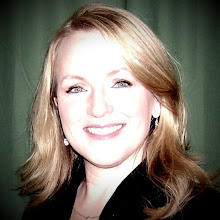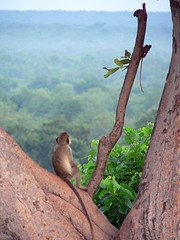Seattle Weekly writer John Metcalfe looks at some of the most undesirable neighbors in popular and pricey Belltown. Specifically, the new and highly-anticipated sculpture garden built by the Seattle Art Museum (SAM), expected to attract throngs of visitors from all over the world, is juxtaposed with the WaNPRC.For the UW scientists, whose research focuses on developing AIDs vaccines using monkeys, the unveiling of the city's newest tourist amenity coincides with their own renovation plan. The center is hoping to upgrade to Animal Biosafety Level 3, so that it can infect monkeys with more virulent microorganisms.
The explanation of biosafety level 3 is minimal here, and I doubt many will have a point of reference for either of the agents mentioned in the example. However, the word bioterrorism might pique the interest of some:The center is now at a biosafety level of "2 plus," according to center director David Anderson. With the kick up to Level 3, the researchers could be infecting animals with pathogens that have a higher risk of human transmission and pack more wallop, such as tularemia or rabbit fever, which is considered a possible bioterrorism agent and can be spread through the air.
I'm sure the folks who pay top dollar for their pricey waterview condos, hip boutiques and martini bars love the new rabbit fever feature.
There are a few quotes from locals in the article, but the author seems more focused on the views of the undesireable neighbors (a stinky meat processing plant is also featured)." One might think that the invasion of world-renowned sculpture would be inconvenient for an animal- testing facility that tries, through lack of signage, to remain invisible to the general public and animal-rights extremists. (Ecoterrorists set the University of Washington's Center for Urban Horticulture ablaze in 2001, and researchers with the primate center have had protesters show up at their homes.) The park's previous incarnation—by all accounts a fallow, oil-soaked field stalked by perverts and reprobates—was perhaps an ideal neighbor.
But Anderson isn't perturbed by the encroaching international art spotlight and influx of tourists. "We have a very secure building," he says. "With the way some of the animal activists have approached this, we keep a tight lid on it."
I wonder if the "perverts and reprobates" appreciated having vivisectors next door?
Check out the full article in the Seattle Weekly.
Feb 3, 2007
Simians and SAM
posted at 9:59 AM
Labels: animal models, NPRCs Hotlinks: DiggIt! Del.icio.us
Subscribe to:
Post Comments (Atom)


0 Comments:
Post a Comment